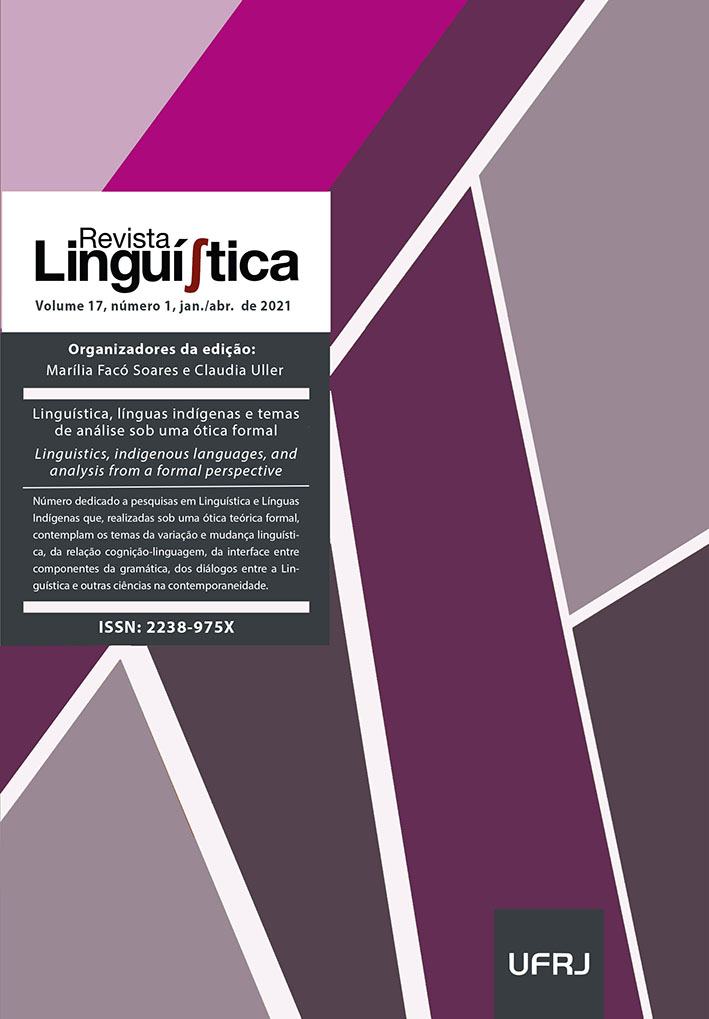Adverbial quantifiers in Trocará Asurini, Tupinambá and Mbya Guarani (Tupi-Guarani languages)
DOI:
https://doi.org/10.31513/linguistica.2021.v17n1a54084Keywords:
Tupi-Guarani languages, quantification, adverbial quantifiers, verbal affixes, categorial indeterminancy.Abstract
Quantification is a research area still under-studied among Tupi-Guarani languages. Vieira (1995) was one of the first investigators to make a preliminary analysis of the quantifier types employed by Asurini do Trocará.More than twenty-five years have passed since that publication but until now no other study of the expression of quantification notions in this linguistic group has come up. Our aim in this paper is very simple: to rescue Vieira’s initial research,by bringing it as a starting-point to carry out a comparative description with two other genetically related languages: Tupinambá and Guarani Mbyá. For the description of the quantifiers employed by these languages, we make use of the distinction suggested by Partee et alii (1987) between two types of quantification: D(eterminer) and A(dverbial). D-quantification refers to determiner-like elements while A-quantification includes not only adverbs but also auxiliary verbs and verbal affixes, among other categories. As was already pointed out by Vieira (1995), we show here that Tupi-Guarani languages make use of adverbial quantificatifiers to express cardinality and universal quantification notions. These A-quantifiers are non-selective and can have scope not only over the predicate but also over NPs. An interesting property of these quantifiers is their categorial indeterminacy, as they can be realized either as adverbs or as verbs. This categorial change can be explained by Distributed Morphology (Marantz, 1997; Siddiq, 2009) which suggests that the word categories are syntactically derived by the merger of lexical roots with specific functional morphemes. Besides independent words, nominal and verbal suffixes can also be employed to expressnotions like “many”and “all”, These suffixes also act as non-selective quantifiers which can bind any variable under their scopes. As one can see, in these Tupi-Guarani languages, important quantification notions are expressed through A-quantifiers-adverbs, verbs and verbal suffix-rather than through D-quantifiers.Downloads
Published
Issue
Section
License
Authors who publish in the Revista Linguí∫tica agree with the following terms:
The authors maintain their rights, ceding to the journal the right to first publication of the article, simultaneously submitted to a Creative Commons license permitting the sharing with third-parties of published content as long as it mentions the author and its first publication in the Revista Linguí∫tica.
Authors may enter into additional agreements for the non-exclusive distribution of their published work (for example, posting in online institutional or non-profit repositories, or book chapters) so long as they acknowledge its initial publication in the Revista Linguí∫tica.

The journal Revista Linguí∫tica is published by the Post-Graduate program in Linguistics of UFRJ and employs a Creative Commons - Attribution-NonCommercial 4.0 International (CC-BY-NC).









